A review of Great City Parks; Second Edition, by Alan Tate with Marcella Eaton. 2015. ISBN 978-0-415-53802-2/ ISBN 978-0-415-53805-3/ ISBN 978-1-315-75071-2. Routledge, New York. 344 pages.
 In this thoughtful and detailed documentation of “great” city parks, which is enlivened by spare and insightful opinions, I am reminded of the series that started with the book Jane’s Fighting Ships, first published in 1898 by Fred T. Jane. The book was intended to aid in then-elaborate naval ship battle games. Over the next century, well after Jane’s passing, battleships and war planes have been similarly cataloged for the enjoyment of military history buffs under the catchall title Jane’s … In some very basic ways, Great City Parks is a park buff’s “Jane’s…”. But the author, Alan Tate, with Marcella Eaton, goes much further than cataloguing; he interweaves facts and figures with social and political history, design ethos, management and restoration plans, and, occasionally, subtle but incisive criticism
In this thoughtful and detailed documentation of “great” city parks, which is enlivened by spare and insightful opinions, I am reminded of the series that started with the book Jane’s Fighting Ships, first published in 1898 by Fred T. Jane. The book was intended to aid in then-elaborate naval ship battle games. Over the next century, well after Jane’s passing, battleships and war planes have been similarly cataloged for the enjoyment of military history buffs under the catchall title Jane’s … In some very basic ways, Great City Parks is a park buff’s “Jane’s…”. But the author, Alan Tate, with Marcella Eaton, goes much further than cataloguing; he interweaves facts and figures with social and political history, design ethos, management and restoration plans, and, occasionally, subtle but incisive criticism
Having spent a lifetime in city parks, both as a citizen user and as a professional manager, I count myself as a member of the proud and sometimes eccentric community of park lovers and urban nemophilists. Thus, any book that comes out about the great city parks of the world immediately commands my attention. Dr. Alan Tate, planner, landscape architect, and professor and Head of the Department of Landscape Architecture at the University of Manitoba, has just released his second edition of his 2001 Great City Parks, this time assisted by Dr. Marcella Eaton, also a practitioner and Associate Dean in the University of Manitoba Department of Landscape Architecture.
Park geeks and urban nemophilists, not to mention the “designers, administrators, planners and politicians with current and future responsibilities for city parks” that the author cites as the primary target audience, have reason to celebrate and pore over this lovingly detailed volume, richly illustrated with photographs (most of them by the authors) and simple plans of the parks, and heavily annotated with quotes, citations, and footnotes.
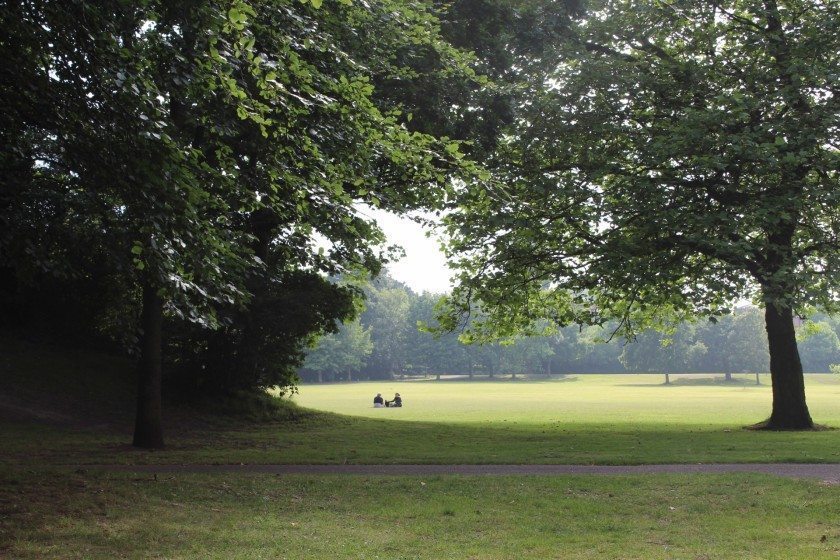
Great City Parks focuses on 30 parks, from the very earliest urban public park—Birkenhead Park in Merseyside, UK—to one that has just been completed—New York City’s High Line Park—and looks at a scale ranging from entire parks systems, such as that of Minneapolis, Minnesota (US) and the Emerald Necklace in Boston, Massachusetts (US), to a tiny, (1/10 of an acre) privately owned public space in New York City: Paley Park. The authors follow the same formula for each park so that comparisons can be made, looking consecutively at history, planning & design, and management & usage as broad categories of analysis, with important sub-categories including “Key figures in the establishment of the park” and “Original design concept.” In some of the analyses, the authors include rigorous, in-depth histories; for some parks, these are based on citing the work of other researchers, especially in writing about older and much-documented parks such as Central Park. For others, as with the High Line, the histories appear based on substantial personal interviews with the key players.
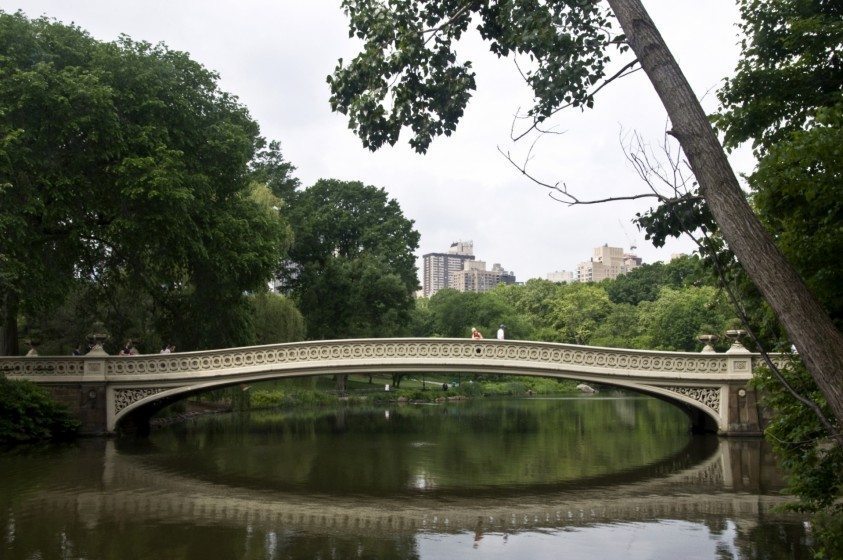
I have visited 18 of the 30 parks cited and have intimate knowledge of all the parks in New York City, some of whose creation or restoration I played a role in. So I paid particular attention to their descriptions of the NYC parks, checking for accuracy in their interpretations. On accuracy, based on my knowledge, they get an A+. In the descriptions of the five NYC parks, I could find only one very minor point to quibble with. The authors properly credited Elizabeth Barlow Rogers, Central Park’s first Administrator, founder of the Central Park Conservancy, and leader of the Park’s extraordinary restoration, for her huge roles, but incorrectly cited her for acknowledging “contemporary demands”— specifically, Christo and Jeanne-Claude’s “The Gates,” a Park-wide art installation of 2005, which was held long after Ms. Rogers had stepped down. (In fact, Ms. Rogers and then-Parks Commissioner Gordon Davis rejected the art installation in the early 1980s in a lengthy and eloquent treatise that cited the primary and urgent need to restore the then-devastated Park. With the enthusiastic support of Mayor Michael R. Bloomberg and First Deputy Mayor Patti Harris, I worked with a team to stage The Gates to enormous critical and popular acclaim in a park that was, by then, beautifully restored.)
That teeny quibble aside, I was astonished at the ability of the authors to capture so much salient information in what were very complex acts of park creation and/or restoration, both in digesting and summarizing many critical works on the parks and park movements, and in keen observations, one mirroring mine about Central Park: “It can also be construed as a precedent for Disneyland—with Main Street USA equating to the Mall and Sleeping Beauty’s Castle representing the Belvedere on Vista Rock.” That observation is contained in the important section of each chapter titled “Conclusions.” Few have ever so succinctly captured the importance of a park: “Central Park is the prototypical American pastoral park and remains one of the most powerful precedents in the entire history of landscape architecture. Latterly it has also become a model for philanthropic private support for public parks.”
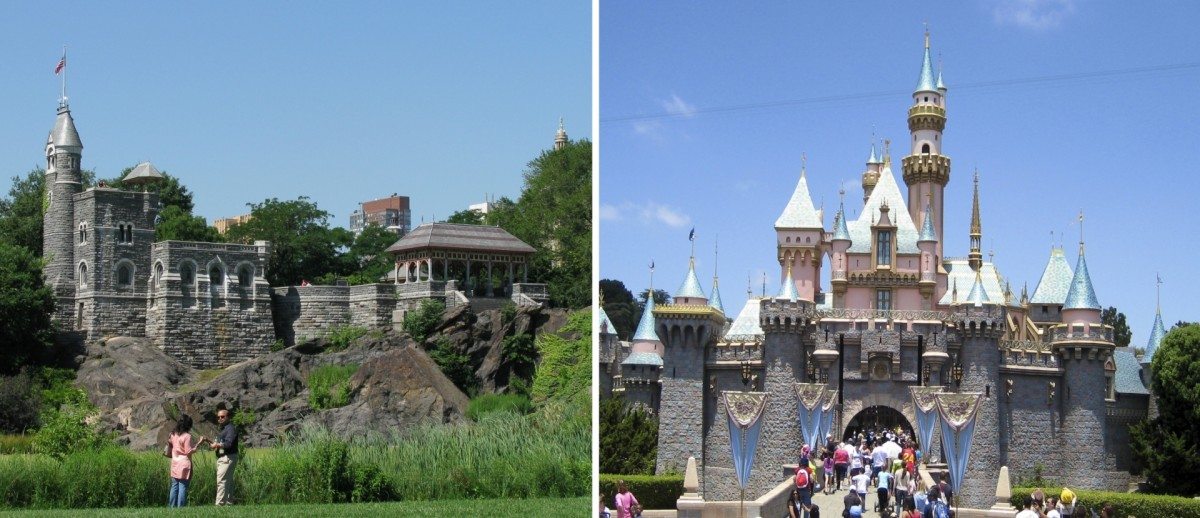
The “Conclusions” are also places for the otherwise restrained authors to reveal personal opinions of the various parks. For example, in evaluating Parc de la Vilette in Paris, by architect Bernard Tschumi, they shift from understated to quietly scathing: “The results on the ground do not justify the fanfare that preceded them…[Tschumi] produced an ultimately unsatisfactory exploration of non-place-specific architectural theories—a flat open space between government cultural institutions.” They close with this zinger: “Other park designers tend to recognize that they are responsible for creating places for users rather than for themselves.”
It would be tempting to see the authors as tilting toward the practice and practitioners of landscape architecture (and away from architects and architecture), and toward historic, pastoral exemplars as opposed to modern, architectural parks. However, they celebrate the designs of some very modern parks, including several constructed out of urban blight, highways, and post-industrial areas, such as Freeway Park in Seattle WA (US); Westergasfabrik Park in Amsterdam, Netherlands; Landschaftspark Duisburg-Nord Park, in Germany; Queen Elizabeth Olympic Park, London (UK), and the High Line in New York City, NY (US), among ten parks built after the mid-20th Century featured in the book. And while Paris’s Parc de la Vilette takes some appropriate criticism, two other contemporary Parisian parks, Parc Andre Citroen and Parc de la Bercy, receive positive reviews.
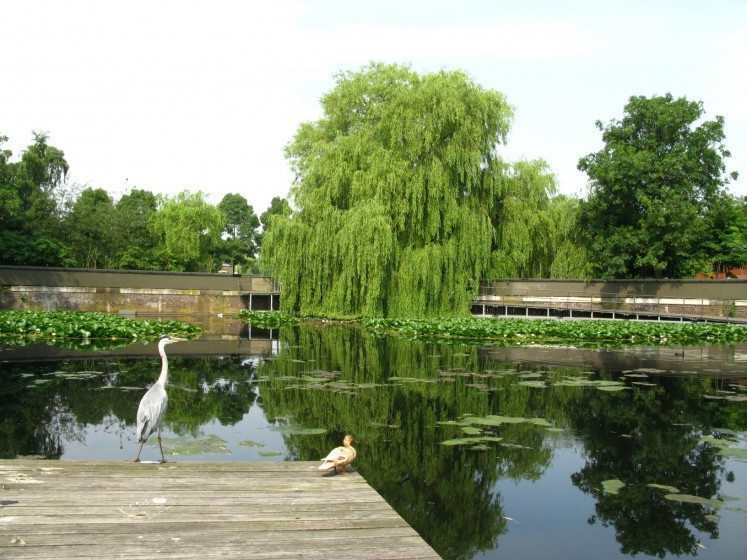
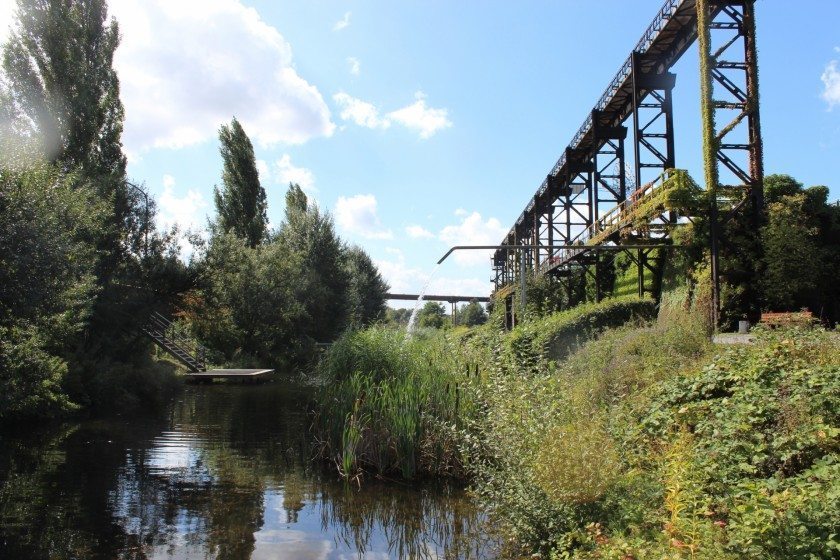
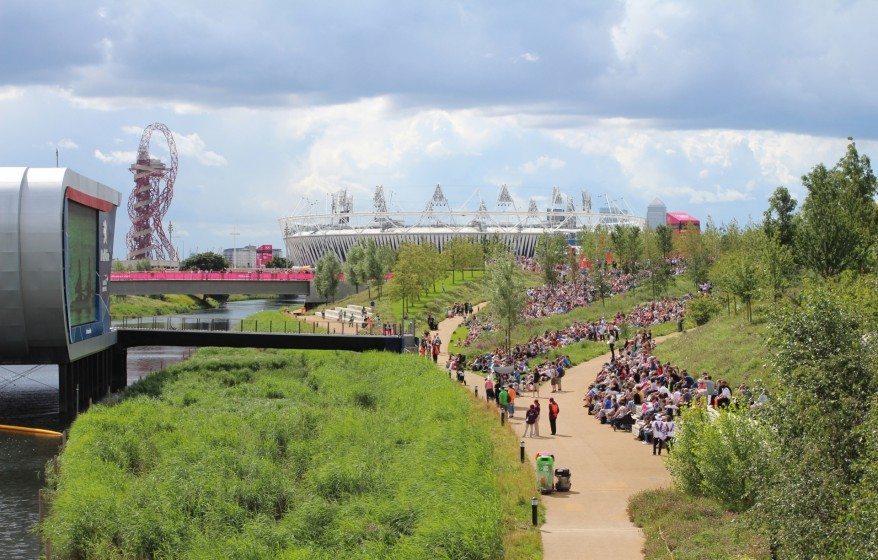
Great City Parks is a 344-page treasure chest for park professionals and aficionados and catnip for city park enthusiasts. It is a book to which one can return repeatedly and which one can treat both as a great reference book and as a primer for how one might think about designing or restoring the next great park. In reading it, however, I found myself wishing for just a bit more of the author’s sparingly dispensed opinions along with more of a sensory exploration of what it is like to actually walk around these parks and experience the people, smells, sounds, and the overall genius loci. In the preface, Tate teases at one of the most intangible but important aspect of a park landscapes:
But what might constitute a great park? There is no easy answer. Well, there is. It’s like being in love. You know when you’re in it and that gels with Burke’s definition of beauty as ‘that quality or those qualities in bodies by which they cause love [“that satisfaction which arises to the mind upon contemplating any thing beautiful, or whatsoever nature it may be, from desire or lust”] or some passion similar to it’.
In other words, “greatness,” in a park, is not just what technically makes a park function at the highest level, but what puts the romance in the “Romantic Landscape.” In addition to the important “virtues” that parks bring to cities—as Frederick Law Olmsted enumerated in an 1865 letter to a newspaper, namely “increased real estate value…better public health, an amicable public gathering place, and promotion of safety and social order”—there are so many more values that parks both possess and provide. This book appropriately celebrates Prospect Park as the “less famous but more fabulous younger sibling of Central Park…the ‘anything goes’ counterpart to its more restrained older sibling.” In describing the park’s main entrance from Grand Army Plaza through a tunnel, the superlatives are earned: “The entry sequence through Endale Arch into the Long Meadow is one of the most highly praised human-made visual experiences in the world.” But they also quote Alexander Garvin, planner and educator (who has written his own highly regarded book on the topic, Public Parks: The Key to Livable Communities), in a pop culture-oriented comparison of that entry: “Dorothy opening the door of her black-and-white house to wander into Technicolor Oz, enters into a gorgeous landscape devoid of any trace of the city.”
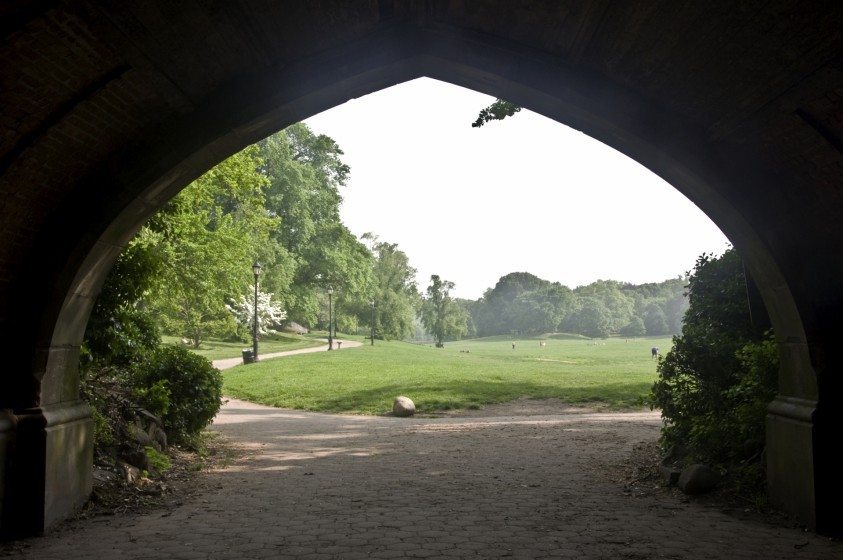
And whereas Tate is reserved most of the time in his explorations of the human experience of park space, it may be up to the reader of this book to understand the true soul of city parks and what makes them great, which is the people who use them and how they interact with design, nature, and each other (such personal responses can be found in Catie Marron’s lovely City Parks: Public Places, Private Thoughts, a collection of essays mostly by fiction writers, but including one by President William Clinton).
As someone who has traveled through that Prospect Park tunnel and explored the seemingly vast reaches of the Long Meadow and intimate byways of the wooded Ravine, I understand on a personal and tangible level what this book hints at in terms of the experience of place in great city parks. It’s almost a paraphrase of Supreme Court Justice Potter Stewart’s famous definition of hard core pornography: “I shall not today attempt further to define the kinds of material I understand to be embraced within that shorthand description and perhaps I could never succeed in intelligibly doing so. But I know it when I see it…”
This book succeeds at defining what makes great city parks; what makes them truly great is up to the beholder. And we know one when we see it.
Adrian Benepe
New York City

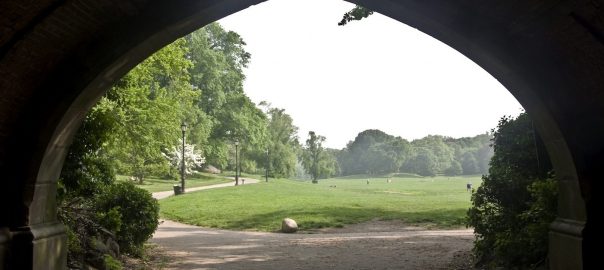






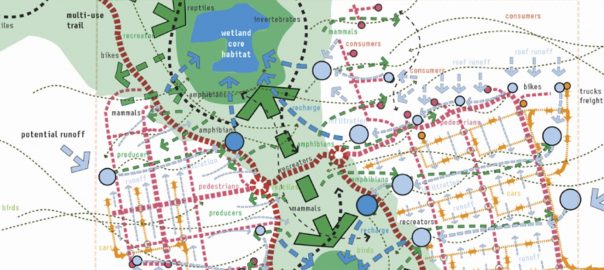


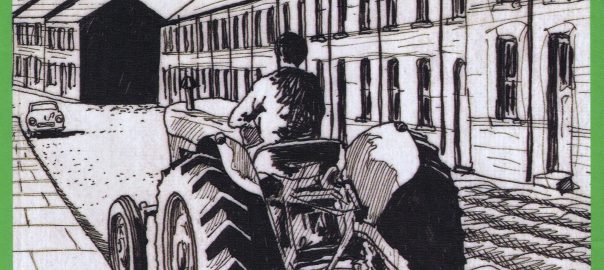
Add a Comment
Join our conversation